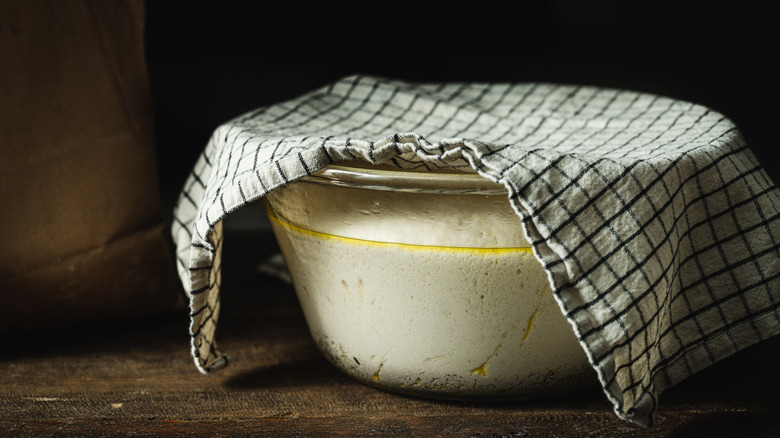The Important Dough Tip You Need For The Best Beignets
Whether searching the lively streets of New Orleans, Louisiana for a quick snack or trying out a new recipe in your deep fryer, beignets are a delicious treat sure to satisfy your sweet tooth. The only food item on the famous New Orleans' Cafe Du Monde's menu, beignets are renowned for their tasty simplicity. From fruit-filled to savory-stuffed, the originally French fritter has undergone many yummy iterations, but the classic, New Orleans style still dominates Bourbon Street coffee houses and eateries.
Pillowy, airy, and just the right amount of sweet, beignets make the perfect breakfast pastry, or homey dessert for any time of day. With just a few basic ingredients and kitchen tools, you can serve up a plate of steaming, sugary goodness, but the real secret is in your dough preparation. Letting your dough rise for at least two hours, or even overnight, will take your recipe to the next level.
On the rise
A successful batch of beignets is all about the dough. While staple ingredients like flour, sugar, eggs, and butter might get more of the cooking spotlight, yeast is the real star of beignet recipes. Fungal microorganisms may not sound totally appetizing, and Saccharomyces cerevisiae — the scientific name for the yeast used in baking — is a real tongue twister, but the science of yeast turns boring, flat dough into puffy perfection ready for deep frying. Baker's yeast performs three main functions in dough: increasing volume, altering structure, and adding flavor — all essential for the best beignet experience.
As a yeast-based pastry, New Orleans beignet dough requires ample time to rise. Yeast ferments sugars in the dough, creating carbon dioxide bubbles that change the dough's texture. The gas expands in the dough, which is why beignets have those delightful air pockets when they come out of the fryer. Your beignet dough needs to double in size, so allow at least two hours for the leavening agent to work its magic, or rather, its science. Longer proofing times mean fluffier dough since the yeast has more time to make gas. So, you could try proofing your dough overnight in the fridge for super beignet bubbliness.
A little patience pays off with beignets, and you won't regret the extra rising time when you bite into an iconic taste of the French Quarter right in your own kitchen. Enjoy yeasty, fluffy beignets served with café au lait and a big ole heap of powdered sugar.

